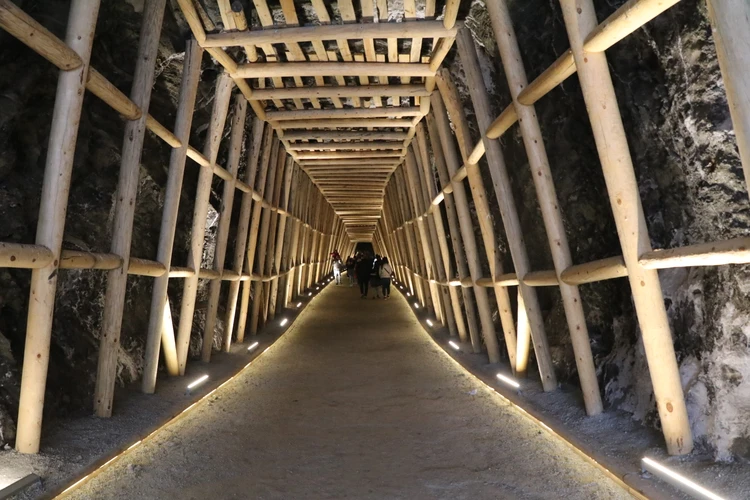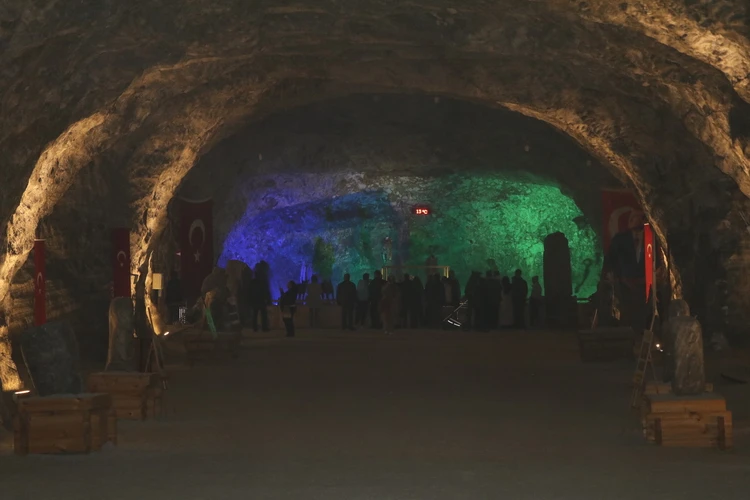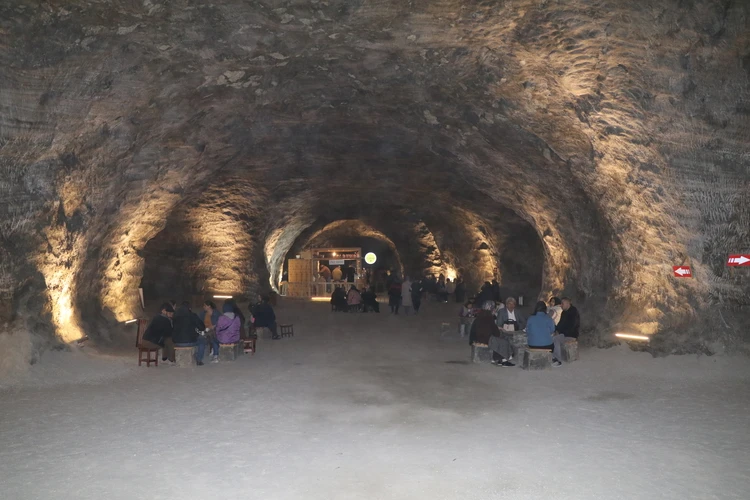Cankiri’s Salt Cave: A hidden gem of Türkiye
 Entrance area of Cankiri’s Salt Cave in central Anatolia, Türkiye on 26.11.2023. (AA Photo)
Entrance area of Cankiri’s Salt Cave in central Anatolia, Türkiye on 26.11.2023. (AA Photo)
Cankiri’s Salt Cave, home to Türkiye’s largest rock salt reserves spanning 800 acres, continues to captivate visitors with its sculptures made of salt, salt stalactites and well-preserved animal fossils. The cave has also emerged as a health tourism hub, believed to be beneficial for respiratory conditions like asthma and bronchitis.
Located within the boundaries of Balibag Village in Cankiri, the Salt Cave was formed as a result of rock salt extraction. The rock salt layers are found between sedimentary layers dating back 24 million to 37 million years. These salt deposits have likely been mined since the time of the Hittite Empire.

The Hittites were an ancient Anatolian peoples (modern-day Türkiye) from around 1700 to 1200 B.C.E., with their capital at Hattusa, which is also located in the Corum province in near proximity to the salt deposit. They were pioneers in iron-working technology, which gave them a significant military edge during the Bronze Age.
One particularly fascinating feature of the cave is the well-preserved donkey that tragically fell into the salt bed 200 years ago and remained intact until today. In the past, salt was extracted using donkey and horse-drawn carts. The donkey, originally transferred to the Ankara MTA Museum, began to deteriorate and was brought back to the cave, where its preservation continues due to the antibacterial properties of the salty environment. Recently, well-preserved fossils of a rabbit and a snake were also displayed in the cave.

Visitors praise the unique atmosphere of the cave and the health benefits it offers, particularly for those suffering from asthma and bronchitis. The cave continues to draw visitors, especially during the Ramadan holiday, when the number of guests increases.
The cave, located approximately 20 kilometers (12.43 miles) from Cankiri city center and covering 18,000 square meters of indoor space, has become an intriguing attraction with its 200-year-old, well-preserved donkey and various taxidermied animals. The cave is also home to numerous sculptures and works of art, further adding to its allure. During the holiday, visitors from various cities come to take photographs and examine the salt sculptures.
The cave holds Türkiye’s largest salt reserves, and the mine operated by a private company yields 1.6 million tons of salt annually. The company operates in near proximity to the salt cave which is open to visitors.

Growing touristic interest
According to Gurol Topcu, a spokesperson for the cave management, the number of visitors has been steadily rising, with people traveling from all over Türkiye. “We are seeing heavy interest, especially from Istanbul, Hatay and Adana. This pleases us greatly. In the past, this area was not well developed, but in recent years, improvements like parking lots, cafeterias, and landscaping have transformed the Salt Cave.”
“On average, we host between 3,000 to 5,000 visitors daily. You descend 150 meters underground, and there are reliefs of fossils from 7-9 million years ago found in Cankiri. There’s a donkey from the past that once worked here. It has a wonderful ambiance,” Topcu added.



